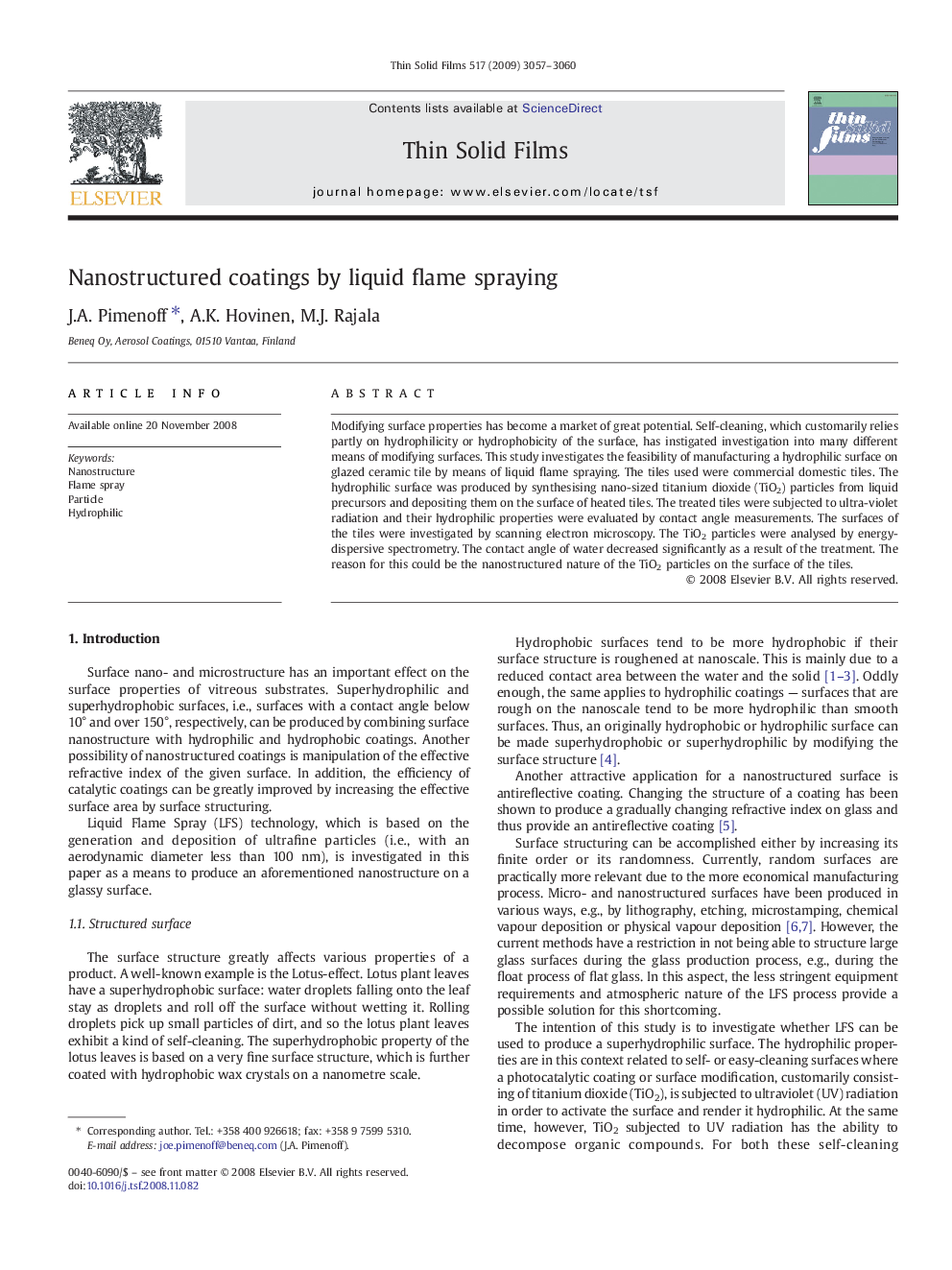| Article ID | Journal | Published Year | Pages | File Type |
|---|---|---|---|---|
| 1669823 | Thin Solid Films | 2009 | 4 Pages |
Modifying surface properties has become a market of great potential. Self-cleaning, which customarily relies partly on hydrophilicity or hydrophobicity of the surface, has instigated investigation into many different means of modifying surfaces. This study investigates the feasibility of manufacturing a hydrophilic surface on glazed ceramic tile by means of liquid flame spraying. The tiles used were commercial domestic tiles. The hydrophilic surface was produced by synthesising nano-sized titanium dioxide (TiO2) particles from liquid precursors and depositing them on the surface of heated tiles. The treated tiles were subjected to ultra-violet radiation and their hydrophilic properties were evaluated by contact angle measurements. The surfaces of the tiles were investigated by scanning electron microscopy. The TiO2 particles were analysed by energy-dispersive spectrometry. The contact angle of water decreased significantly as a result of the treatment. The reason for this could be the nanostructured nature of the TiO2 particles on the surface of the tiles.
